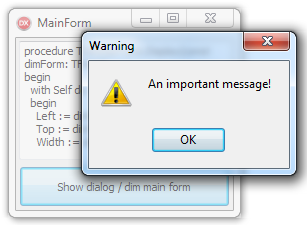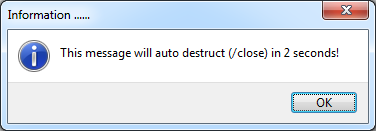
Dialog windows you use to display critical information to the user are, in most cases, displayed modally. A modal window (form) is the one where the application can’t continue to run until the modal window is closed. Delphi’s ShowMessage, InputBox and MessageDlg, for example, display a modal form to the user waiting for some action. Your custom dialogs are displayed using the ShowModal method of a form.
Dimmer – a device for varying the brightness of light
To emphasize the importance of a modal form and the information it presents, you could gray out the main form of the application when the modal form is activated.
Continue reading

 Users do not read dialogs. They. Do. Not. Neither do we developers (admit it). Dialogs are scary things that pop to the user asking to make some kind of selection / decision. Users mostly simply click the little [x] button and hope no further questions would be raised. Regression:
Users do not read dialogs. They. Do. Not. Neither do we developers (admit it). Dialogs are scary things that pop to the user asking to make some kind of selection / decision. Users mostly simply click the little [x] button and hope no further questions would be raised. Regression: 